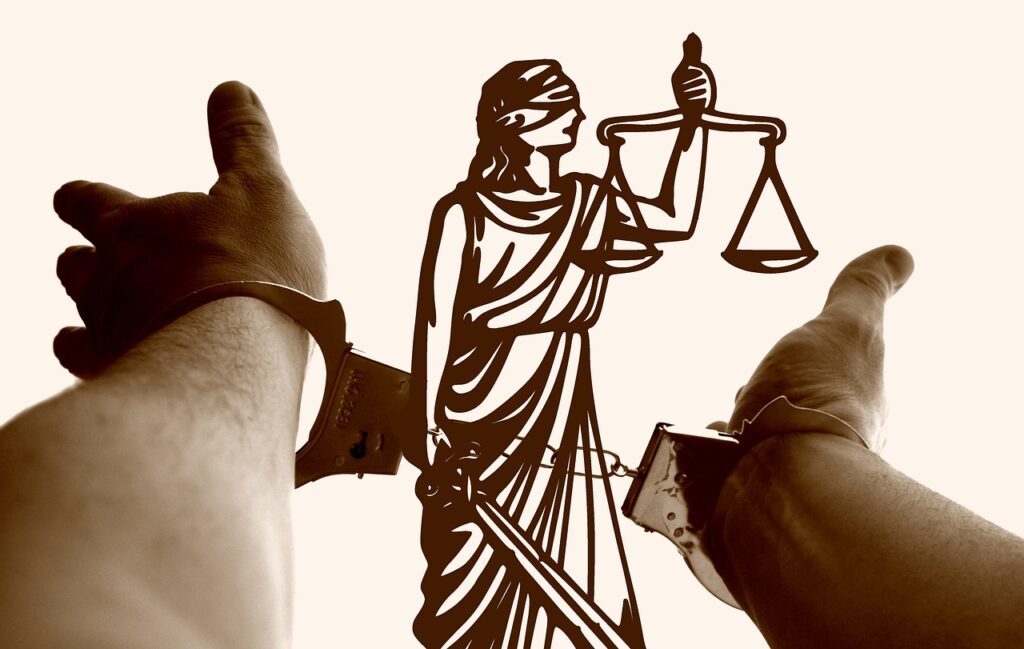Introduction
The concept of burden of proof is the cornerstone of the law of evidence. It determines who must prove a fact in any legal proceeding. Every case involves facts asserted by one party and denied by another. The party who wants the Court to decide in its favor must prove those facts.
The Bharatiya Sakshya Adhiniyam, 2023 (BSA 2023) deals with this topic in detail under Chapter VII, from Sections 104 to 120. These provisions lay down general principles, specific situations where the burden shifts, and presumptions applied by courts. Understanding them is essential for law students, advocates, and anyone preparing for judicial or competitive exams.
Meaning of Burden of Proof
The term “burden of proof” means the responsibility to establish the existence or non-existence of a fact in a legal proceeding. In simple words — if you make a claim, you must prove it.
In criminal cases, the burden generally lies on the prosecution, as it must prove the guilt of the accused beyond reasonable doubt.
In civil cases, the burden lies on the plaintiff, who must prove the facts necessary to obtain relief.
I. General Principles of Burden of Proof (Sections 104–107)
Section 104. Burden of proof The burden of proof lies on the person who asserts the existence of facts upon which a legal right or liability depends, and who desires the Court to give judgment based on those facts
.
• Example: If A wants the Court to punish B for a crime, A must prove that B committed the crime
.
• Example: If A claims entitlement to land in B’s possession based on facts A asserts and B denies, A must prove those facts
.
Section 105. On whom burden of proof lies In a suit or proceeding, the burden of proof is placed on the person who would fail if no evidence at all were provided by either side
.
• Example 1: If A sues B for possession of land currently held by B, A must provide evidence, otherwise B retains possession, placing the burden on A
.
• Example 2: If A sues B for money on an admitted bond, but B claims fraud, A would succeed if no evidence is given (because the bond is undisputed and the fraud unproven). Therefore, the burden of proving the fraud is on B
.
Section 106. Burden of proof as to particular fact The burden of proving a specific fact lies on the person who wishes the Court to believe in its existence, unless existing law specifies otherwise
.
• Example: If A prosecutes B for theft and alleges B admitted the theft to C, A must prove the admission. If B claims he was elsewhere (alibi), B must prove that fact
.
Section 107. Burden of proving fact to be proved to make evidence admissible The person who wishes to give evidence of a fact must first prove any preliminary fact necessary to make that evidence admissible
.
• Example: To prove a dying declaration by B, A must first prove B’s death
.
• Example: To prove the contents of a lost document using secondary evidence, A must prove that the document was lost
.
II. Specific Allocation and Shifting of Burden (Sections 108–114)
Section 108. Burden of proving that case of accused comes within exceptions If an accused person claims that their case falls within a General Exception in the Bharatiya Nyaya Sanhita, 2023, or any special exception or proviso defining the offence, the burden of proving the existence of those circumstances is upon the accused
. The Court, in such cases, shall presume the absence of such circumstances
.
• Example: If A, accused of murder, alleges unsoundness of mind or grave and sudden provocation, the burden of proving these defenses is on A
.
Section 109. Burden of proving fact especially within knowledge When a fact is specifically or “especially within the knowledge” of a person, the burden of proving that fact is upon that person
.
• Example: If a person performs an act with an intention different from what the character and circumstances of the act suggest, the burden of proving that intention is upon him
.
• Example: A person charged with traveling on a railway without a ticket must prove that he had a ticket
.
Section 110. Burden of proving death of person known to have been alive within thirty years If it is a question of whether a man is alive or dead, and he was known to have been alive within the last thirty years, the burden of proving his death lies on the person who affirms that he is dead
.
Section 111. Burden of proving that person is alive who has not been heard of for seven years If a person has not been heard of for seven years by those who would naturally have heard from him if he were alive, the burden of proving that he is alive shifts to the person who affirms his continued existence
.
Section 112. Burden of proof as to relationship When the question concerns relationships (partners, landlord/tenant, or principal/agent) and it is shown that the persons were acting in such a relationship, the burden of proving that they do not stand, or have ceased to stand, in that relationship is on the person who affirms that change
.
Section 113. Burden of proof as to ownership If a person is shown to be in possession of anything, and the question of ownership arises, the burden of proving that the person in possession is not the owner is placed on the person who affirms the lack of ownership
.
Section 114. Proof of good faith in transactions where one party is in relation of active confidence If the good faith of a transaction is in question between two parties, one of whom holds a position of active confidence over the other, the burden of proving the good faith of that transaction rests on the party who holds the position of active confidence
.
• Example: In a suit concerning a sale between a client and an advocate, the burden of proving good faith is on the advocate
.
• Example: In a suit concerning a sale between a son (just come of age) and a father, the burden of proving good faith is on the father
.
III. Presumptions and Conclusive Proof (Sections 115–120)
These sections outline specific presumptions the Court shall or may apply, which can affect the ultimate burden of proof.
Section 115. Presumption as to certain offences The Court shall presume that a person committed a specified offence (under sections 147–150 of the Bharatiya Nyaya Sanhita, 2023, or criminal conspiracy/abetment thereof
), if:
1. The offense occurred in a declared “disturbed area” or an area with extensive disturbance for over a month
.
2. It is shown that the person was at that place when firearms or explosives were used there to attack or resist armed forces or public order forces
.
This presumption stands unless the contrary is shown
.
Section 116. Birth during marriage, conclusive proof of legitimacy The fact that a person was born during the continuation of a valid marriage between the mother and a man, or within 280 days after the marriage dissolution (if the mother remained unmarried), is considered conclusive proof of that person’s legitimacy as the child of that man
. This can only be disproved if it is shown that the parties had no access to each other at the time the child could have been begotten
.
Section 117. Presumption as to abetment of suicide by a married woman The Court may presume abetment of suicide by a husband or relative of the husband if:
1. The woman committed suicide within seven years of marriage
.
2. The husband or relative subjected her to cruelty
. This presumption is made having regard to all the other circumstances of the case. “Cruelty” here refers to the meaning in section 86 of the Bharatiya Nyaya Sanhita, 2023
.
Section 118. Presumption as to dowry death The Court shall presume that a person caused the dowry death of a woman if it is shown that, soon before her death, she was subjected to cruelty or harassment by that person in connection with any demand for dowry
. “Dowry death” refers to the meaning in section 80 of the Bharatiya Nyaya Sanhita, 2023
.
Section 119. Court may presume existence of certain facts The Court may presume the existence of any fact it deems likely to have occurred, based on the common course of natural events, human conduct, and public and private business in relation to the case facts
.
• Examples of facts the Court may presume include:
◦ A man in possession of stolen goods soon after a theft is either the thief or received the goods knowing them to be stolen, unless he accounts for possession
.
◦ An accomplice is unworthy of credit unless corroborated in material particulars
.
◦ A bill of exchange was accepted or endorsed for good consideration
.
◦ Judicial and official acts have been regularly performed
.
◦ Evidence that was withheld, if produced, would have been unfavorable to the person withholding it
.
◦ If a document creating an obligation is held by the obligor, the obligation has been discharged
.
The Court must consider related contextual facts when determining whether these presumptions apply
.
Section 120. Presumption as to absence of consent in certain prosecution for rape In a prosecution for rape under sub-section (2) of section 64 of the Bharatiya Nyaya Sanhita, 2023, where sexual intercourse by the accused is proven, and the question is consent: if the woman states in her evidence before the Court that she did not consent, the Court shall presume that she did not consent
. “Sexual intercourse” is defined by section 63 of the Bharatiya Nyaya Sanhita, 2023.
Conclusion
The burden of proof under Bharatiya Sakshya Adhiniyam 2023 ensures justice by determining who must establish facts in court.
While the general rule is that “he who asserts must prove,” these sections also recognize situations where the burden shifts or where legal presumptions apply.
Together, Sections 104 to 120 form a comprehensive framework that maintains fairness, efficiency, and balance in both civil and criminal proceedings.

